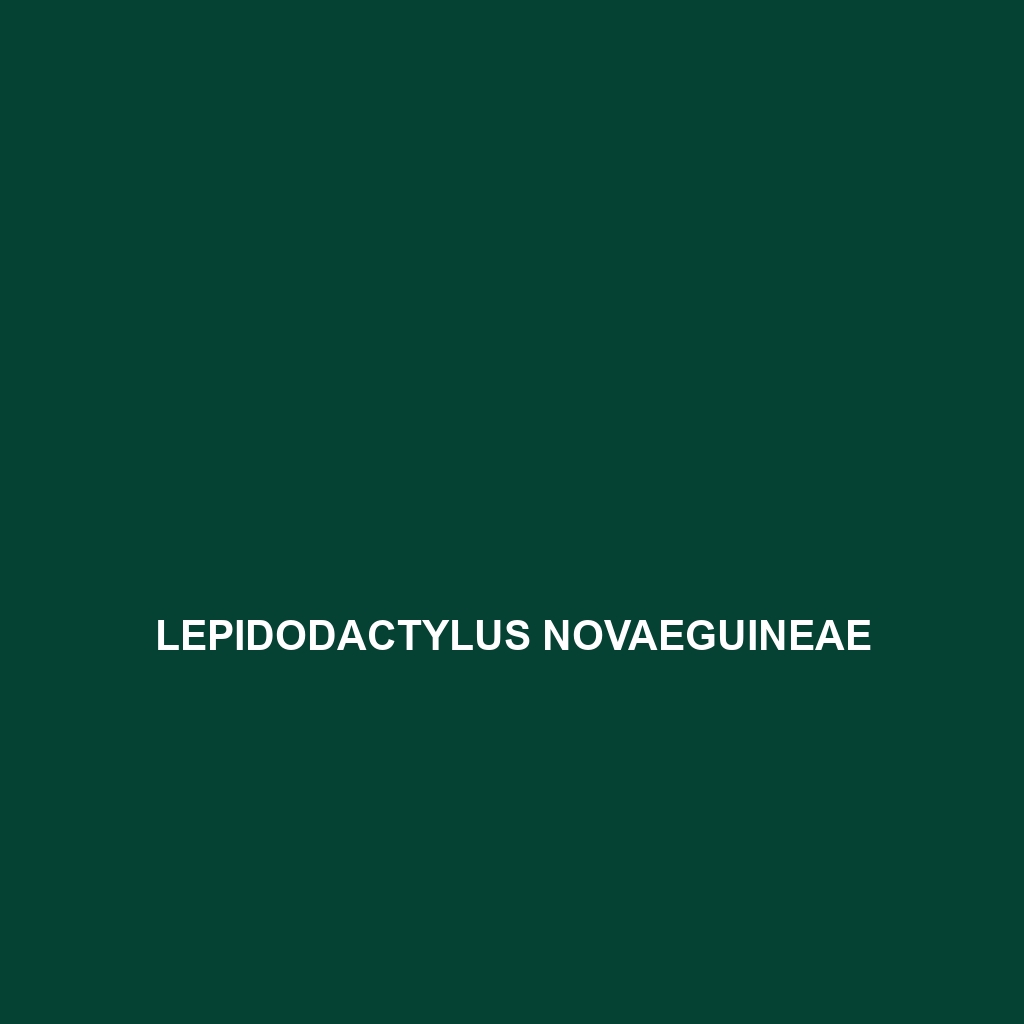Common Name
Lepidodactylus novaeguineae
Scientific Name
Lepidodactylus novaeguineae
Habitat
Lepidodactylus novaeguineae, commonly known as the New Guinea flat-headed gecko, is primarily found in the lush rainforests and diverse habitats of New Guinea and surrounding islands. These geckos thrive in warm, humid climates where temperature and moisture levels create a thriving ecosystem. They are often spotted in areas with dense foliage, providing both camouflage and hunting grounds amidst the rich biodiversity typical of rainforest environments. Lepidodactylus novaeguineae can also be found in semi-arid savannas, which extend the gecko’s range, illustrating its adaptability to different climatic conditions. Furthermore, the gecko may inhabit environments close to coastal marine habitats, reflecting its versatility and ecological resilience. This adaptability is crucial for its survival across the varied geographical regions of its range.
Physical Characteristics
The New Guinea flat-headed gecko is easily identifiable by its distinctive physical features. Adults typically reach sizes of up to 10 centimeters (4 inches) in length and exhibit a unique flattened head that aids in camouflage against the forest floor. Their bodies are covered in smooth scales that may exhibit a range of colors from brown and gray to green, enabling them to blend seamlessly into their surroundings. The coloration varies in response to environmental conditions, with some individuals displaying intricate patterns that enhance their cryptic appearance. Additionally, they possess large, expressive eyes adapted for their nocturnal lifestyle, and their limbs are relatively slender, facilitating agile movement through the trees and underbrush of their habitat.
Behavior
Lepidodactylus novaeguineae exhibits primarily nocturnal behavior, becoming active during the night to hunt for food and engage in social interactions. Their hunting strategies often involve stealth and patience, allowing them to ambush unsuspecting prey. The mating rituals of these geckos can be quite elaborate, with males performing displays to attract females, including intricate body movements and color changes. Territory establishment is critical for males, as they will engage in vocalizations and displays to ward off competitors. During the day, they frequently rest in crevices or under leaf litter, making them less accessible to predators.
Diet
Lepidodactylus novaeguineae is classified as an insectivore, primarily feeding on a diet comprising various insects and other small invertebrates. Their diet includes moths, beetles, and crickets, which they capture with quick tongue flicks in a display of dexterous hunting ability. The gecko’s nocturnal behavior enhances its feeding efficiency, as many of its prey are also active at night. Despite being primarily insectivorous, they may occasionally consume small fruit or nectar, indicating a slight omnivorous tendency that allows them to adapt their diet based on availability.
Reproduction
The reproductive cycle of Lepidodactylus novaeguineae typically begins during the wet season, which coincides with optimal environmental conditions for mating and hatching. During this period, males will engage in courtship displays to attract females. After successful mating, females lay small, leathery eggs in hidden locations, such as under leaf litter or tree bark, to protect them from predators. The gestation period for the eggs is approximately 30 days, after which hatchlings emerge fully formed and capable of independent survival. Parental care is absent, as the young geckos must quickly adapt to their environment to thrive.
Conservation Status
According to the IUCN Red List, Lepidodactylus novaeguineae is currently classified as of “Least Concern.” However, its habitat is under significant threat from deforestation and habitat degradation due to agricultural expansion and urban development, which could impact future populations. Conservation efforts focus on habitat preservation and the establishment of protected areas in their native regions to ensure the survival of this unique gecko species amidst increasing environmental pressures.
Interesting Facts
One of the most intriguing aspects of Lepidodactylus novaeguineae is its ability to change color slightly in response to temperature and environmental cues, a feature that enhances its camouflage. Additionally, these geckos possess a remarkable regenerative ability, allowing them to regrow their tails after losing them to escape predators. This adaptation serves as an essential survival tactic, ensuring that they can continue to thrive in their complicated ecosystems.
Role in Ecosystem
Lepidodactylus novaeguineae plays a vital role in its ecosystem as both a predator and prey. By consuming a variety of insects, it helps control their populations, contributing to the balance of the ecological community in which it resides. Moreover, as prey, they are an essential food source for larger predators, ensuring the stability of the food web. Their presence in the rainforest ecosystem illustrates their contribution to biodiversity and the overall health of their habitat, emphasizing the importance of protecting this gecko species and its natural environment.
